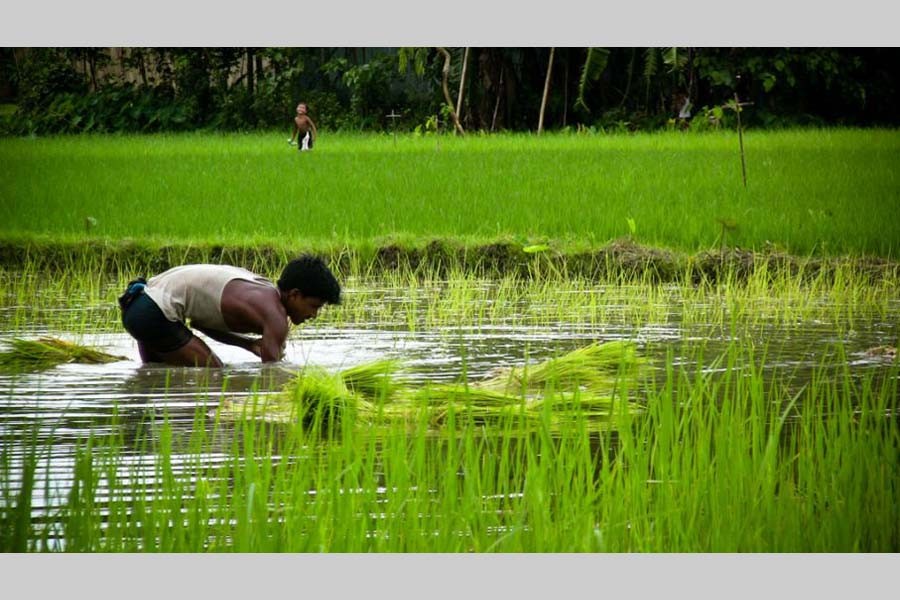A research by the Center for Development Research (ZEF) of the University of Bonn, reveals interesting insights into the changing agriculture and small farms throughout the world. It sheds light on how small farms have evolved in the changing agricultural practices and policies to sustain farmers' livelihoods. This article heavily draws from that research, even at times paraphrases, as the observations also relate to Bangladesh.
Currently, the world population is slightly more than 7.0 billion. It is estimated to increase by a third over the next 40 years. Pari passu, the farm population will increase, but at reduced numbers and with increased aging. Second, the world would become more and more urbanised, thus reducing the share of the total population living on farms. A mega-driver of change is the change in global employment. The total number of employed people will increase from 3.0 billion to 3.5 billion by 2020. The number of those employed in farming will decrease by 0.3 billion. This means an increase in employment outside agriculture by 0.8 billion. However, all of those will not be employed in urban areas. At least half of them will find their employment in the industry and services sectors in rural areas, namely in the small rural centres and towns.
The world population is estimated to reach about 9.0 billion by 2050 and these people will want to eat like 12 billion compared to today, because they will be richer and more urbanised. The volume and patterns of consumption will change. The Western middle-income society is the trendsetter. People will eat more packaged food, more diverse and more fast foods. The consumption of income elastic products such as animal products including milk, eggs and meat will increase. Some of these products in high demand have declining returns to scale, such as vegetables, and are promising candidates for small farm growth; others have increasing returns to scale, such as poultry, and are of diminishing opportunity for small holders.
Agricultural prices determine viability of small farms to a significant extent. These prices have increased and have become more volatile. Volatile prices are adverse to small farm growth as they increase risks (and small farms have low risk-coping capacity) and impair investments. Financial markets and food markets have started to become linked, and especially more so in the last five years. Recall the food price spikes of 2008 as well as the wheat and maize price increase in 2010. The consequences of these trends towards higher prices and their volatility influence the costs of natural resources. As food prices increase, the pricing of natural resources is affected with prices for land and water rising as a consequence of expected higher output prices. There is now an active international demand for land. Currently, most such land acquisitions take place in Africa, although it occurs also in parts of Asia, such as in Cambodia and Pakistan. We now observe an internationalisation of land markets and that impacts on the viability of small farms especially when property rights are insecure. Local government also plays a role in this in Asian nations (i.e. China and India) when land becomes a source of indirect fiscal enrichments.
The mega trend of increasing access to information and communications technology cannot be emphasised enough. It gives a boost to rural areas, and it will change the whole landscape of infrastructure. Not long ago, this trend only entailed cell phones, which are soon to be in everyone's possession all over the world. Currently, there is a fast expansion in smartphones with internet access. This development changes the environment also for small farms. It will facilitate access to rural services and revise the idea of a landlocked region. This will certainly change the future of farms and the landscape of agricultural productivity.
Investments in science will have a fundamental impact on what level of food prices the next generation will have to pay, and what extent of hunger it will experience. There is an urgent need for increased agricultural research investments and enhanced natural resources management and market efficiency together with effective policies. The major technological changes in the next decades will probably not be in the grain sector, but in the meat and dairy and horticulture sectors and in non-food bio economy-related diversification.
As farmers' control over land resources will become more valuable, these farmers are going to be more powerful than they are today, as long as land property rights are protected. Farmers' organisations may become stronger and consequently more capable to represent the farming communities.
Perhaps the most important effect on small farms is coming from technological changes. In Bangladesh, for example, more than four-fifths of the cultivated lands use modern seeds and an equal amount adopts mechanisation. The availability of technology at the door steps could be a challenge. Finally, small farms could also face challenges in the wake of growing super markets, changing agricultural marketing chain and concerns of consumers about food safety. Unless small farms are aware of the coming challenges, their survival could be at stake.
Therefore, the public sector has a prominent role to play in dissemination and adoption of appropriate technologies for production by small farmers. It will warrant that small farms form cooperatives in production and marketing to reap home economies of scale since, as the research shows, small firms are growing inefficient in the face of emerging complexities.
Abdul Bayes is a former professor of Economics at Jahangirnagar University and currently an adjunct faculty, East West University. [email protected]


